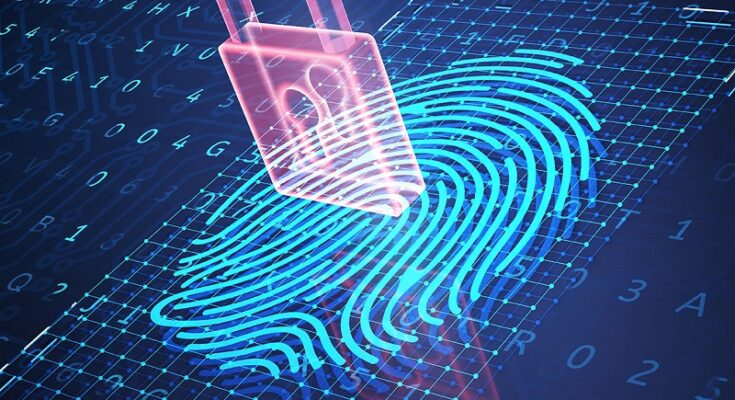As the world continues its journey towards the post-pandemic era, technological advancements have allowed businesses to remain competitive in their markets. The rise of the digital sphere has allowed companies to trade online.This has made business activities more convenient, especially with the increased need for contactless transactions. Modern business tools have also allowed many organizations to boost their workforce’s productivity.
But, along with the progression of technology also comes the surge of cyberattacks that frequently lead to extensive financial and reputational damage. Bad actors are starting to integrate tech-savvy tricks with traditional techniques to exploit vulnerable corporate systems. Fraudsters can now take advantage of companies’ remote work setup, with the Check Point Research reporting a 50% increase in corporate network attacks in 2021.
To counter this, industry leaders have called for a more robust online security. One of the leading solutions being deployed today is the use of biometrics for identity verification. An individual’s biological data, such as fingerprints, face structure, and iris scans, is almost impossible to replicate, so using it for identity proofing is more secure and fool proof.
The Rise of Biometric Authentication in the Modern World
Shifting to digital platforms has allowed numerous industries to thrive amid the COVID-19 pandemic. But it also resulted in the growth of online attacks that target corporate networks to gain access to classified information, such as addresses, social security numbers, and banking details. Adopting biometric verification canhelp businesses bolster their defenses and mitigate the risks of data breaches and identity theft cases.
The development of biometric identification can also help enterprises smoothly move from legacy systems that are becoming more susceptible to digital attacks. For decades, knowledge-based credentials have been the primary protection for corporate accounts. But phishing and modern cyber-crimes have weakened passwords and PINs. These emphasize the need for more robust identity proofing techniques like biometric verification.
As investments in biometric solutions rise, the number of companies offering identity as a service (IDAAS) has also increased. Despite its advantages, implementing biometric identification can be tedious and complex. But IDAAS providers can streamline the deployment of biometric authentication with their state-of-the-art facilities and resources. This will allow organizations to save money on additional people and equipment.
Moreover, as the use of biometric data increases, it becomes more challenging for enterprises and IDAAS services to be ethical in their biometric verification implementation. Several companies are already under the spotlight for potential violations concerning user privacy due to illegal or questionable practices.
Common Issues with Biometric Authentication
The risk of misusing a customer’s data for commercial gain has always been the primary ethical concern in implementing biometric authentication. The buying and selling of customer data have been prevalent in recent years, whether for advertising, hiring, or political reasons. Enterprises and IDAAS providers failing to protect the privacy of their client’s biometric information can lead to numerous issues.
Deployment of biometric authentication is supposed to be straightforward, with corporations only using the data to verify customers whenever they sign into their accounts. However, there are instances where IDAAS services are not precise on their terms and conditions, causing issues with regulatory compliance.
For instance, biometric authentication provider Onfido was under scrutiny earlier this year after they were denied of motion to dismiss complaints under the Illinois Biometric Information Privacy Act (BIPA). This happened after an individual accused the company of misinforming him about how his photograph will be used and stored. Onfido uses facial biometrics to verify users.
Another example of legal issues arising from apotential unethical practice is the case of Clearview AI, a biometric surveillance company. They were accused of hoarding a billion photographs from various social media applications without the users’ consent. The firm wasalso blamed for offering paid access to its database to different public and private organizations around the globe.
Apart from the lack of transparency on how the data will be used, another common challenge of biometric identification is providers’ limited datasets, which leads to racial bias. There are instances when biometric scanners fail to recognize people of color and those from particular regions, such as Asia.
Achieving Ethical Biometric Verification
Since biological data are unique to each person, compromising it can permanently compromise user accounts and private networks. With its importance in modern digital security systems, companies must providethat biometric data is well-protected against any threats, whether from bad actors or the organizations themselves.
One of the prime practices when accomplishing ethical biometric identification is to have a clear guideline on how the information will be used. Transparency goes a long way in the digital world.Respecting biometric data’s integrity can help build a strong consumer relationship.
The clients must be fully informed on at least four categories, which include:
- Which data will be stored;
- How long will it be stored;
- How will the data be used; and
- And to whom the data will be shared.
In addition, improving datasets when developing facial or fingerprint scanners will help eliminate racial bias in biometric identification. Early technological advancements are done with imagery of at least 77 percent male and 83 percent white people. An improved dataset will allow biometric identification providers to make their systems inclusive. This willprovidean excellent experience regardlessof a person’s age, skin color, or ethnicity.
Furthermore, promoting accountability in the industry can also help companies and IDAAS providers in the long run. Biometric verificationdevelopers can partner with firms from various industries to provide adequate training to individuals who will operate the system. This will also enable IDAAS firms to work with authorities in cultivating statutes that can improve the implementation of biometric authentication.
Conclusion
The rise of biometrics has provided an excellent opportunity for companies to enhance their online defenses. It helped bolster identity verification systems with a robust alternative to passwords and madethe process faster and more convenient.
However, certain practices have led to the jeopardy of countless biometric information. And this has consequently led to IDAAS providers facing legal consequences.
Making the entire process straightforward can help enterprises adequately protect the classified information of their clients. This will also allow biometric developers and policymakers to create a common standard in biometric verification that can boost business growth and improve customer trust.
Sources:
https://link.springer.com/chapter/10.1007/978-3-030-87664-7_20
https://www.shrm.org/resourcesandtools/hr-topics/technology/pages/biometric-technologies-grow-.aspx




